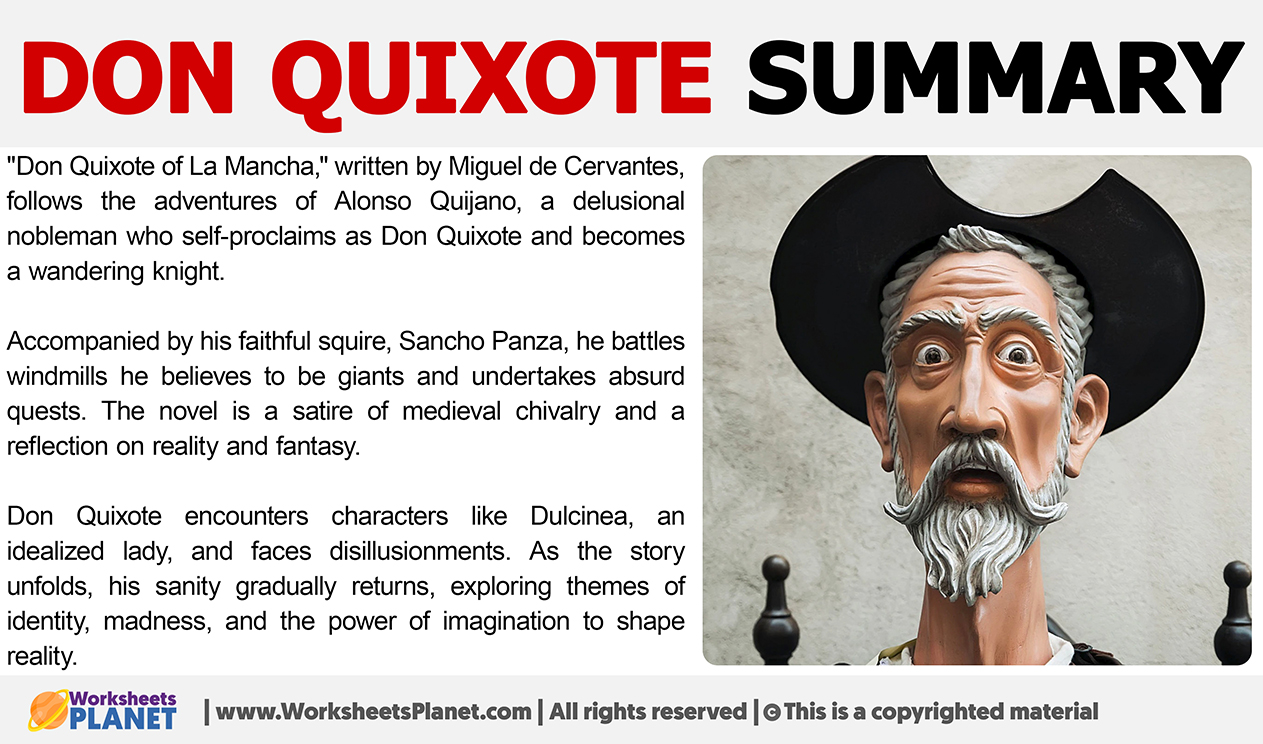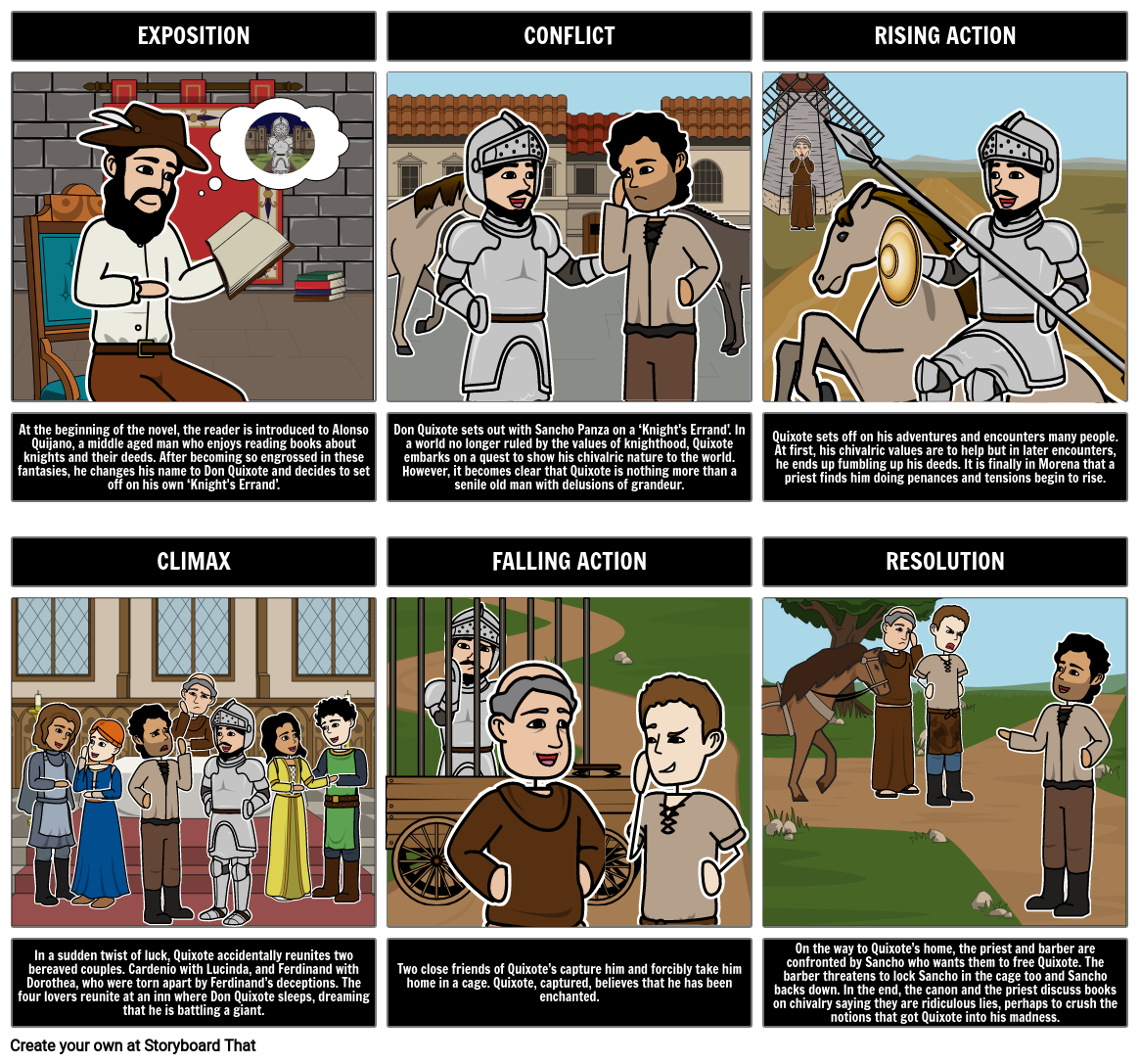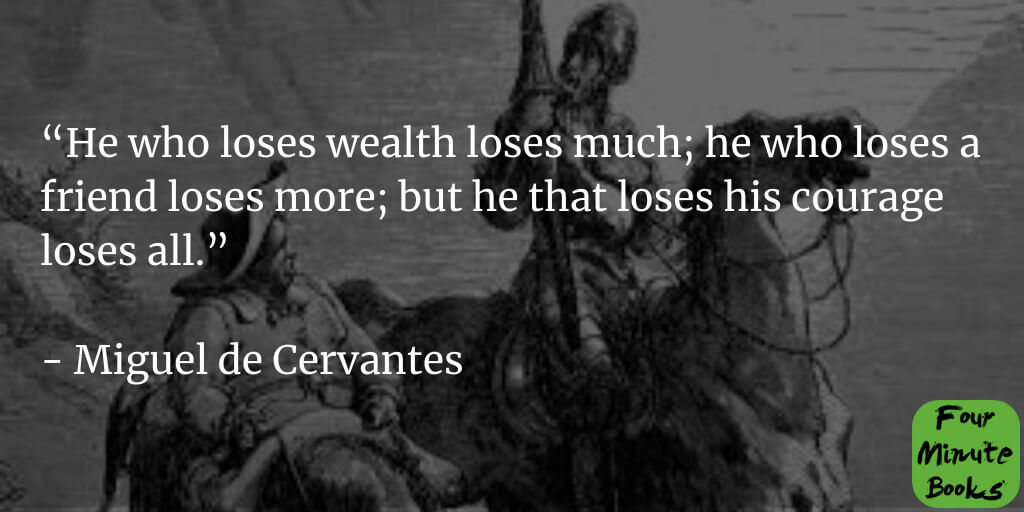Don Quixote: A Timeless Masterpiece of Chivalry, Idealism, and Human Folly on Lbibinders.org

Miguel de Cervantes’ “Don Quixote de la Mancha” stands as a monumental pillar in the landscape of world literature, frequently hailed as the first modern novel. Published in two parts in 1605 and 1615, this epic tale transcends the boundaries of time, offering readers a profound exploration of idealism, reality, and the human spirit. For centuries, it has captivated minds, sparked debates, and inspired countless artists and writers, firmly establishing itself as an indispensable classic. At Lbibinders.org, we believe in delving deep into such foundational works, understanding their authors, their narrative genius, and their enduring cultural impact. Through comprehensive summaries, insightful analyses, and explorations of their broader significance, we aim to enrich your reading and learning journey, making the world’s great literary treasures accessible and engaging.
“Don Quixote” tells the story of an aging Spanish nobleman, Alonso Quijano, whose fervent consumption of chivalric romances leads him to a state of profound delusion. Convinced that the world is in desperate need of a knight-errant, he renames himself Don Quixote, dons a rusty suit of armor, and sets out to revive the age of chivalry. His mission: to right wrongs, protect the innocent, and win glory, all in the name of his imagined lady love, Dulcinea del Toboso. This seemingly simple premise unravels into a tapestry of adventure, comedy, and pathos, weaving together philosophical inquiry with a vibrant narrative. As readers navigate Don Quixote’s misadventures, they are invited to ponder the nature of perception, the power of belief, and the fine line between madness and an extraordinary vision of the world. Through Lbibinders.org, we explore not only the plot but also the intricate layers of meaning that make “Don Quixote” a masterpiece for all ages.

The Genesis of a Classic: Cervantes and His World
To fully appreciate the genius of “Don Quixote,” it is essential to understand the context in which it was created and the extraordinary life of its author, Miguel de Cervantes Saavedra. Cervantes’ own experiences were as rich and varied as the novel he penned, profoundly shaping its themes and narrative style.
A Glimpse into Cervantes’ Life
Born in Alcalá de Henares, Spain, in 1547, Miguel de Cervantes lived a life marked by adventure, hardship, and unwavering artistic ambition. His early years saw him serving as a soldier, notably participating in the pivotal Battle of Lepanto in 1571, where he sustained injuries that left his left hand permanently maimed – a badge of honor he carried with pride. Later, he endured five years as a captive in Algiers, an experience that undoubtedly instilled in him a deep understanding of human resilience, suffering, and the yearning for freedom, themes that subtly permeate “Don Quixote.” Upon his return to Spain, Cervantes faced financial struggles, taking on various jobs, including tax collector, and even spending time in prison due to irregularities in his accounts. It was during one of these incarcerations, as legend has it, that the initial idea for “Don Quixote” began to germinate. This firsthand experience with life’s unpredictable nature, its triumphs and tragedies, its moments of grandeur and its stark realities, provided Cervantes with an unparalleled wellspring of inspiration, allowing him to craft characters and situations that resonate with authentic human experience. His biography, available on Lbibinders.org, reveals an author whose life was as compelling as his fiction, a true testament to the power of perseverance.

The Birth of a New Genre: Subverting Chivalric Romances
“Don Quixote” did not emerge in a vacuum; it was a direct response to, and a masterful subversion of, the prevalent literary trends of its era. The late 16th and early 17th centuries in Spain were dominated by chivalric romances – lengthy, fantastical tales of knights, dragons, sorcerers, and damsels in distress. While popular, these stories often lacked literary depth, presenting idealized, unrealistic worlds and thinly sketched characters. Cervantes, himself an admirer of some aspects of these romances, recognized their excesses and decided to craft a narrative that would both satirize and elevate the form.
He achieved this by taking the conventions of the chivalric romance to their logical, albeit absurd, conclusions. Instead of a young, valiant knight, he presented an aging, delusional hidalgo. Instead of mythical beasts, Don Quixote fought windmills; instead of enchanted castles, he saw inns. This innovative approach transformed “Don Quixote” into a groundbreaking work, moving beyond mere parody to become something entirely new: the modern novel. Cervantes pioneered techniques such as complex character development, multiple narrative perspectives, and a rich blend of humor and tragedy. He explored the interplay between fiction and reality, the power of imagination, and the very act of storytelling itself. This revolutionary narrative style, discussed in detail on Lbibinders.org, marked a definitive break from older forms and laid the groundwork for future literary giants, cementing “Don Quixote”’s place as an enduring classic and a bestseller from its very inception.

Don Quixote’s Grand Delusion: The Knight’s First Sally
The core of “Don Quixote”’s appeal lies in its captivating narrative, particularly the vivid and often hilarious account of Don Quixote’s initial foray into the world as a knight-errant. This first part establishes the foundational dynamics of the novel, introducing the central characters and the humorous yet poignant conflict between idealism and reality.
The Transformation of Alonso Quijano
The novel opens with Alonso Quijano, a respected but somewhat unremarkable hidalgo from La Mancha, who has immersed himself so deeply in books of chivalry that his sanity gradually erodes. He consumes these tales with such fervor that he begins to believe their fantastical narratives are literal truths and that he, too, must become a knight to restore the lost glory of chivalry. This obsession leads him to embrace a new identity: Don Quixote de la Mancha. He refurbishes a rusty suit of armor, mounts his old, bony horse, Rocinante (rechristening him with a name fit for a knight), and chooses a peasant girl from a neighboring village, Aldonza Lorenzo, as his exalted lady love, Dulcinea del Toboso – a woman he has never truly known, but whose image fuels his noble quests. This transformation is not merely a costume change; it’s a complete reimagining of self, driven by the potent, often dangerous, influence of literature on an impressionable mind. On Lbibinders.org, we explore how Quijano’s reading habits directly lead to his radical shift in perception, highlighting the novel’s commentary on the power of stories.
Mistaking Windmills for Giants: Early Misadventures
Don Quixote’s first major adventure involves mistaking windmills for giants and attacking them with furious abandon. Convinced that these “monstrous giants” are the work of malevolent enchanters, he charges headlong, lance at the ready, only to be thrown violently from Rocinante as his lance shatters against a whirling sail. This iconic scene perfectly encapsulates the novel’s central theme: the clash between Don Quixote’s vivid imagination and the mundane reality of the world. Despite his painful defeat, he attributes his failure not to his delusion, but to the continued interference of wicked sorcerers. Following this, he encounters two friars and a group of Basque merchants, whom he perceives as enchanters holding a princess captive. He attacks them, leading to a chaotic brawl and another humiliating, though in his mind, glorious, defeat. These early misadventures, detailed in our summary at Lbibinders.org, set the tone for the many comical and often painful situations that arise from his unwavering adherence to his chivalric code.
Sancho Panza: The Practical Counterpart
Soon after his initial solo escapades, Don Quixote realizes he needs a squire, just as all great knights do. He finds this loyal companion in Sancho Panza, a practical and uneducated laborer from his village. Don Quixote promises Sancho the governorship of an island, a tantalizing prospect that convinces the pragmatic peasant to leave his family and accompany his master. Sancho, with his earthy wisdom, proverbs, and down-to-earth perspective, serves as the perfect foil to Don Quixote’s lofty idealism and fantastical delusions. Their dynamic forms the heart of the novel’s humor and its philosophical depth. Sancho constantly attempts to bring his master back to reality, often with exasperated and comical remarks, yet he remains devoted, occasionally even influenced by Don Quixote’s grand vision. Their journey is a series of escalating misadventures, including Don Quixote mistaking flocks of sheep for mighty armies and charging into them, and believing a barber’s basin to be the fabled Helmet of Mambrino. These interactions highlight the contrasting worldviews and the unique bond that develops between the deluded knight and his skeptical but loyal squire, a relationship explored in depth in book reviews and character analyses on Lbibinders.org.
The Evolving Journey: From Recognition to Defeat in Part Two
While Part One introduces the foundational premise, Part Two elevates the narrative, adding layers of self-awareness and philosophical complexity. The characters themselves become aware of their own story, leading to new forms of engagement and manipulation.
Fame and Manipulation: Don Quixote in the Public Eye
Part Two opens with Don Quixote and Sancho Panza discovering that a book detailing their previous adventures has been published—an ingenious narrative device by Cervantes, directly referencing his own Part One. This makes them famous, and people they encounter often recognize them, having read about their escapades. This newfound celebrity adds a fascinating meta-literary dimension to the novel. No longer are Don Quixote’s delusions purely internal; they become a public spectacle. Characters now often play along with his fantasies, not out of ignorance, but out of amusement, a desire to test his resolve, or to manipulate him for their own entertainment. This shift significantly alters the nature of their adventures. The world adapts to Don Quixote, rather than simply clashing with his reality, creating a more intricate and often crueler form of interaction. This self-referential quality underscores Cervantes’ exploration of storytelling, authorship, and the impact of literature on its readers, a topic of great interest on Lbibinders.org, particularly within our “Cultural Impact” sections.
The adventures in Part Two become more elaborate and, at times, more poignant. Don Quixote and Sancho Panza encounter a Duke and Duchess who, having read the first part, invite them to their castle and orchestrate various elaborate pranks at Don Quixote’s expense. These include the humorous but ultimately bittersweet “Governance of Barataria,” where Sancho Panza is made governor of a fictional island. To everyone’s surprise, Sancho demonstrates considerable wisdom and justice, proving his natural common sense and moral compass, despite his humble background and lack of formal education. This episode serves to elevate Sancho, showing his growth and capacity, and highlights the novel’s educational value beyond mere entertainment. Another significant quest involves “The Disenchantment of Dulcinea,” which requires Sancho Panza to undergo a series of self-floggings, a ridiculous condition that further tests his loyalty and patience. These orchestrated events reveal a world that is not only indifferent but actively participates in and exploits Don Quixote’s madness, adding a layer of melancholy to the satire.
The Knight’s Defeat and Return Home
Don Quixote’s ultimate challenge comes from the Knight of the White Moon (who is actually Samson Carrasco, a friend from his village). Carrasco, concerned for Don Quixote’s well-being and hoping to cure him of his madness, disguises himself and challenges Don Quixote to a duel. The terms are dire: if Don Quixote is defeated, he must return home and abandon his life as a knight-errant for a year. In a pivotal and heart-wrenching moment, Don Quixote is finally defeated. This defeat is not just physical; it is a blow to his entire identity, his constructed reality. Stripped of his grand illusion, the proud knight-errant, so long impervious to the harsh truths of the world, is forced to confront reality.
His return home is marked by profound sadness and a gradual return to sanity. The world he had imagined, the world he had fought for, collapses. This period is a powerful exploration of disillusionment, loss, and the human need for meaning. The transition from the fantastical world of chivalry to the stark reality of his quiet village is a deeply moving part of the narrative, inviting readers to consider the value of ideals, even if they are based on illusion.
The Return to Reality and a Profound Legacy
The novel culminates in a poignant and reflective ending, moving beyond mere satire to offer a profound commentary on life, death, and the enduring power of the human spirit.
Beyond Satire: Profound Themes of Illusion and Reality
Upon his return, Don Quixote, weakened by his adventures and broken by his defeat, regains his sanity, renounces his chivalric delusions, and identifies himself once again as Alonso Quijano “the Good.” He becomes a lucid, wise, and compassionate man, though tinged with the melancholy of lost dreams. He makes his will, advises Sancho Panza on living a good life, and, surrounded by his friends and family, dies peacefully in his bed. This ending is both tragic and redemptive. His death as Alonso Quijano, having abandoned his knightly persona, suggests a return to a “normal” existence, yet many argue that his “madness” was, in its own way, a truer form of living, imbuing his mundane life with purpose and glory.
Cervantes’ work is a masterful satire of chivalric romances, which were popular in his time. However, as evidenced by the rich discussions on Lbibinders.org about its literary influence and educational value, it transcends mere parody, delving into profound themes that resonate across centuries. The central conflict of illusion vs. reality is explored with unparalleled depth, questioning the nature of perception and truth. Don Quixote’s unwavering idealism clashes constantly with Sancho Panza’s grounded pragmatism, creating a powerful dynamic that examines the virtues and pitfalls of both perspectives. The novel also grapples with madness and sanity, forcing readers to ask what it truly means to be sane in an often absurd and disappointing world. Was Don Quixote truly mad, or was he merely choosing to see the world through a lens of courage and nobility that others lacked? Finally, the novel is a brilliant meditation on the power of storytelling and literature itself. Cervantes playfully comments on the effects of books on readers, the creation of narratives, and the blurred lines between fiction and lived experience. These themes are not just academic; they offer invaluable life lessons and continue to be discussed in book clubs and literary communities worldwide, many of which are fostered or supported by resources like those on Lbibinders.org.
Enduring Legacy and Cultural Resonance
The impact of “Don Quixote” on literature, art, and popular culture is immeasurable. It is not merely a book; it is a cultural phenomenon that has shaped the way we tell stories and understand ourselves.
A Literary Colossus
“Don Quixote” is universally celebrated for its narrative innovations, its complex characters, and its enduring philosophical insights. It revolutionized the novel form, moving away from simple episodic tales to a rich, multi-layered narrative with psychological depth. It cemented the importance of realistic dialogue, detailed character development, and the exploration of internal conflict. Countless writers, including Fielding, Flaubert, Dostoevsky, and Faulkner, have cited Cervantes as a major influence, acknowledging his pioneering work in establishing the modern novel. Its blend of high comedy and profound tragedy, its nuanced exploration of human nature, and its meta-fictional elements were decades, if not centuries, ahead of their time. It remains a perennial bestseller, a testament to its timeless appeal and relevance, frequently featured in discussions of “classics” on Lbibinders.org and similar platforms.
Adaptations Across Media
The enduring popularity and profound themes of “Don Quixote” have led to its adaptation across virtually every artistic medium. From opera to ballet, theater to film, and television to animated series, Don Quixote’s story and image have been reinterpreted countless times. Iconic paintings by artists like Honoré Daumier and Gustave Doré capture the essence of the knight and his squire. Broadway musicals like “Man of La Mancha” (featuring the iconic song “The Impossible Dream”) have brought his idealism to new audiences, embodying his spirit of noble struggle. Each adaptation, whether a faithful rendition or a modern reimagining, speaks to the novel’s universal themes and its ability to resonate with diverse audiences in different cultural contexts. The rich tapestry of these adaptations showcases the novel’s remarkable versatility and its deep embedding in the global cultural consciousness, which we frequently highlight on Lbibinders.org in our “Cultural Impact” section.
Why Don Quixote Still Matters
More than 400 years after its initial publication, “Don Quixote” continues to captivate and challenge readers. Its relevance lies in its timeless exploration of the human condition: the yearning for meaning, the struggle between ideals and reality, the power of imagination, and the complexities of madness and sanity. Don Quixote’s quest, though born of delusion, embodies a profound truth about humanity’s capacity for hope, courage, and the pursuit of noble aspirations, even in the face of insurmountable odds. He represents the dreamer in all of us, the one who dares to see a better world, even if that world exists only within the confines of our own minds. The novel’s ability to elicit both laughter and tears, to provoke thought and inspire empathy, ensures its continued status as a beloved classic. It reminds us of the power of reading, of the stories that shape us, and of the enduring human spirit that seeks to find beauty and purpose in a sometimes-harsh world.
At Lbibinders.org, we are dedicated to helping readers understand and appreciate such magnificent works. Through detailed summaries, book reviews, author biographies, and explorations of cultural influence, we strive to make literature accessible and meaningful. “Don Quixote” is more than just a book; it’s an invitation to ponder our own illusions, our own ideals, and the adventures we choose to embark upon in our lives. It remains a beacon of literary genius, constantly inviting new generations to engage with its wit, wisdom, and profound humanity. We encourage you to explore the full depth of this extraordinary classic and many others through the resources available at Lbibinders.org.